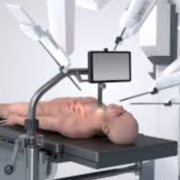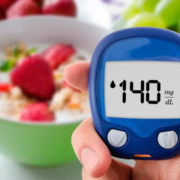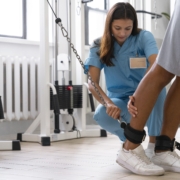How New Jersey is Supporting Addiction Recovery Through Telehealth
Introduction
Addiction remains a formidable public health issue across the United States, and New Jersey is no exception. From opioid misuse to rising stimulant dependency, communities across the Garden State continue to grapple with the evolving face of substance use disorders. Yet, in the heart of this crisis, innovation has emerged.
Telehealth—once a niche service used sparingly in behavioral health—has taken center stage. As the state seeks agile, inclusive, and cost-effective solutions, telehealth has become a vital conduit for supporting addiction recovery. New Jersey’s commitment to harnessing digital platforms signals a broader shift in how treatment is delivered and accessed.
A Comprehensive Step Between Inpatient and Outpatient Care
For individuals navigating the complexities of addiction and mental health challenges, structured yet flexible treatment options offer vital support. Partial hospitalization programs NJ provide an intensive level of care without requiring overnight stays, bridging the gap between inpatient hospitalization and traditional outpatient therapy.
These programs typically involve daily therapeutic sessions, medication management, and access to multidisciplinary clinical teams. Patients benefit from a routine that fosters stability while allowing them to return home in the evenings, preserving a sense of normalcy. This model is especially beneficial for those needing consistent care without the confines of a residential setting.
The Addiction Landscape in New Jersey
New Jersey has witnessed a complex and often devastating interplay of addiction drivers. According to the New Jersey Department of Human Services, over 82,000 individuals sought substance use disorder (SUD) treatment in 2023 alone. Opioids, especially fentanyl, continue to dominate the narrative, although alcohol, methamphetamines, and benzodiazepines also contribute significantly to admissions.
Socioeconomic disparities, urban-rural treatment gaps, and housing instability compound the challenge. Areas such as Camden, Trenton, and Newark face elevated overdose rates, while rural regions contend with treatment scarcity. This variegated landscape underscores the need for scalable and adaptable treatment modalities—telehealth chief among them.
Telehealth’s Emergence as a Recovery Tool
Telehealth’s trajectory in New Jersey has been markedly influenced by necessity. Initially slow to gain traction, virtual behavioral health services expanded rapidly in response to the COVID-19 pandemic. With in-person clinics shuttered or limited, providers turned to HIPAA-compliant video platforms, telephonic check-ins, and digital therapy groups.
This digital pivot was not merely reactive—it was transformative. For many, the convenience of logging into a session from home removed longstanding barriers like transportation, scheduling conflicts, and social stigma. It redefined therapeutic access, especially for individuals in underserved or marginalized communities.
Key Telehealth Programs in New Jersey
New Jersey has mobilized a multifaceted approach to integrate telehealth into its addiction recovery infrastructure. Through Medicaid expansion, the state ensured broader reimbursement for virtual services, removing a significant financial obstacle. The Department of Human Services, in collaboration with the Division of Mental Health and Addiction Services (DMHAS), launched initiatives aimed at digitizing outpatient programs and enhancing mobile crisis response capabilities.
Nonprofits like the Mental Health Association in New Jersey (MHANJ) and Rutgers Behavioral Health Care have leveraged telehealth to expand peer support networks, counseling services, and medication-assisted treatment (MAT) consultations. Telepsychiatry, a once rare offering, is now a staple across numerous care centers statewide.
Benefits of Telehealth in Addiction Recovery
The merits of telehealth extend far beyond convenience. For individuals navigating early recovery, the ability to maintain consistent therapeutic engagement—without geographical or logistical constraints—can be life-altering. Virtual care reduces wait times, curtails missed appointments, and supports patients with co-occurring mental health disorders through integrated platforms.
Moreover, anonymity is an often-overlooked advantage. For many, attending recovery sessions from the privacy of their homes lowers the psychological hurdle of seeking help. The sense of control and autonomy provided by telehealth enhances adherence to recovery plans, fostering deeper trust and resilience.
Challenges and Limitations of Telehealth Services
Despite its promise, telehealth is not without pitfalls. The digital divide remains stark, particularly among low-income and older populations. Inconsistent broadband access, lack of digital literacy, and limited access to smart devices can exclude those most in need.
Additionally, regulatory ambiguity around telehealth prescribing—especially for controlled substances like buprenorphine—has posed logistical and legal hurdles. Concerns about data security and HIPAA compliance continue to loom large, especially as more providers enter the virtual space without standardized protocols.
Building Emotional Resilience with Structured Support
In New Jersey, individuals seeking a structured and evidence-based approach to managing intense emotions are increasingly turning to DBT therapy NJ providers. Dialectical Behavior Therapy (DBT) offers a powerful framework for those dealing with borderline personality disorder, self-harm behaviors, or chronic emotional dysregulation.
By combining mindfulness practices with cognitive-behavioral techniques, DBT helps clients build emotional resilience, improve interpersonal effectiveness, and reduce impulsivity. Therapists across the state offer both individual and group sessions, often integrated with virtual options for greater accessibility. This therapeutic model empowers individuals to navigate life’s challenges with greater awareness, balance, and control over their emotional responses.
The Future of Telehealth in Addiction Recovery
Encouragingly, New Jersey is not resting on its laurels. Legislative action such as the Telehealth Advancement Act seeks to codify virtual care as a permanent fixture within the state’s health architecture. Policymakers are actively working to extend emergency waivers, broaden reimbursement models, and support telehealth parity.
Simultaneously, hybrid treatment models are gaining ground. These combine the flexibility of virtual sessions with the depth of in-person care, creating a continuum that adapts to individual needs. Wearable tech, app-based progress tracking, and AI-driven diagnostics may soon amplify the efficacy of these services.
Conclusion
New Jersey’s embrace of telehealth in addiction recovery reflects a broader evolution in how society views and treats substance use disorders. By leveraging technology, the state is bridging longstanding gaps in care, reaching the unreached, and modernizing a system long overdue for transformation.
While challenges persist, the momentum is undeniable. Through thoughtful policy, public-private partnerships, and continued investment in digital equity, New Jersey is crafting a future where recovery is not only possible—but profoundly accessible.













